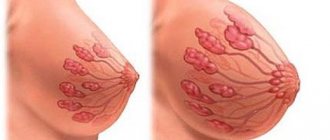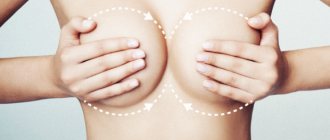Weaning a baby from the breast is the last difficulty that nursing mothers face. Here, as in the entire fragile process of breastfeeding a child, it is important not to make mistakes and do everything correctly.
Olga Sereda, a breastfeeding consultant for the Polar Bear project, told YarMalysh about the intricacies of completing breastfeeding.
So what to do?
If you have the opportunity, contact a lactation consultant. He will help you create a personalized schedule for gentle termination of feeding. In this case, the peculiarities of the relationship and needs of mother and child, and the condition of the mother’s breasts will be taken into account. The consultant will give recommendations on how to act at each stage of weaning - how to teach the child to fall asleep and be comforted without the breast, what to do if the child becomes more demanding and whiny, and, if necessary, teach him to express the breast to prevent milk stagnation. And it will help you cope with difficulties at any stage of completing feeding.
If you don’t have the opportunity to contact a professional, try making a schedule yourself. Divide the period that you determine for completing the GW into four parts, each of which should last at least a week. The maximum duration of each stage, as well as their sequence, can be anything.
How to replace breast milk
If the baby is weaned before the age of one year, it is necessary to provide him with an alternative. In the first 6 months, the child cannot eat adult food, so mother’s milk must be replaced with an adapted formula. After six months, the child also needs a dairy product. It is recommended to feed formula after weaning for at least one year.
Cow's milk should not be given to children of the first year. Previously, pediatricians recommended that mothers replace breastfeeding with regular milk or liquid semolina. However, modern doctors and breastfeeding consultants categorically disagree with them. Cow's milk is not only useless for a child of the first year of life, but can also be a dangerous product.
If you decide to curtail lactation, you need to choose a formula. There are different types of baby food on store shelves: traditional, for children with individual nutritional needs, and babies with various pathologies. An adapted mixture is selected according to the age of the child.
At the third stage, you have to teach your baby to fall asleep at night without the breast.
Remember that without a breast is not necessarily without a mother. If possible, involve help, but you can easily do it on your own. At this age, almost all children are interested in listening to fairy tales, songs, and remembering how their day went. Take advantage of this - after a short period of attachment, communicate in a calm environment with the baby lying in the crib, the way he likes. You can give your child a light relaxing massage, stroke or pat his back. Of course, not the first time, but gradually the child will accept the rules of the game and at some point he will definitely fall asleep on his own.
Useful tips
We figured out how you can wean a baby over one year old from breastfeeding; it will also be useful to pay attention to the tips for mothers when weaning:
- Never smear your nipple with brilliant green, mustard or other substances. The child will be disappointed in the safest and most familiar, this is a huge stress. In addition, such experiments can harm the baby’s health.
- Do not start weaning in hot weather, when teething is active or the newborn is not feeling well.
- You must be emotionally prepared for the end of lactation and stand your ground. If you held out for several days, and then, due to the whims of the baby, gave him the breast, all your efforts will be in vain.

Experienced mothers say that if you don’t know how to stop breastfeeding, then start small. Go towards your goal step by step; for children over two years old, the story about where the milk went is suitable. Perhaps a kitten or another familiar character needed it. Don't show your breasts, distract the baby.
Finally, it is worth noting that the Ministry of Health has long determined the value of mother's milk for all years of feeding, be it at 2, 3 or 4 years. And this was the case at all times before the Second World War, when it was necessary to raise the country and therefore the state came up with feeding a child up to a year. The optimal time for self-weaning of a child is from 2.5 to 4 years. Be sure to listen to your child. After all, this is not just food, it is a special emotional connection. Breastfed children grow up to be emotionally stable, confident individuals and individuals. And as a rule, the health of breastfed children is stronger and they get sick less often in the future or illnesses are much easier.
Health to you and your baby!
The last thing you will most likely remove is night and early morning attachments.
By this time, the child will already get used to the fact that the mother sometimes (or almost always) refuses to breastfeed him during the day. Therefore, refusal at night will no longer be stressful for him.
In addition, after two years, children are quite conscientious. And you can and should discuss your nighttime behavior with them during the day and before bed. For example, you can agree that during night awakenings, instead of breastfeeding, you will offer him water or compote. Or pronounce simple words that everyone sleeps at night, listing all friends and relatives, and then adding that the baby, and the mother, and her breasts also sleep at night. And at night just remind you of your agreements.
Termination of lactation
Now let's talk about mom's feelings. Unfortunately, there is no way to tell the mammary glands that they no longer need milk. We no longer feed the baby, but the milk continues to flow. As a result, the chest is subjected to severe stretching, and the sensations become more unpleasant and painful with each rush.
During this period of time, it is recommended to wear a bra. It should be pitted, but dense, made of cotton (natural) fabric and should not stretch. That is, to play the role of a corset. If you don’t have one in your wardrobe, you can wear any, but be prepared for the fact that it can cut into your body and cause itching: stretched skin becomes more sensitive. You will need to wear it until the milk completely burns out.
Troubles begin on the second day, when there is a lot of milk. Choose for yourself which option you prefer. You can express milk little by little, this will help alleviate the “pressure”; you can use a breast pump and express until your breasts are soft, but leaving some of the milk.
In the first option, the milk will burn out faster, but for several days there will be a lot of unpleasant sensations. In the second, there will be no painful sensations, but the burnout process will be delayed. To some extent, this is the same as weaning a baby from the breast gradually.
When expressing according to the first principle, for different women the moment of cessation of milk production may begin on the 3-5th day. On these days, reduce the amount of liquid you drink to a minimum. It is better to maintain the fluid restriction until the milk in the glands completely burns out, that is, until the moment when the breasts return to their pre-feeding size, become soft and all lumps, even small ones, disappear. After this, for about another 1-2 months, give up anything that can help restore lactation.
The process of milk burnout is also accompanied by not very pleasant sensations. If during hot flashes you feel the skin stretching, then combustion is accompanied by the opposite process - “stretching”. This is less painful, but also unpleasant. It seems that something is sucking out the contents of the glands from the inside, and at times there is still a tingling sensation. After the hot flashes stop, “resorption” will last another 5-7 days. Pain and psychological state (despite the fact that most women are already depressed while caring for a child) lead to nervous breakdowns and increased excitability. Therefore, it will be necessary to show patience to the mother herself, and care for her to her husband and other family members. You can take sedative herbs or antidepressants.
When starting weaning, try to consider the following factors:
- the child must be healthy for at least a month before weaning;
- a clear daily routine and creating your own bedtime rituals will most likely help you more than someone from your family and friends;
- It is better not to separate the child in the summer;
- the baby needs your love and care even if you stop breastfeeding.
And remember that only mother and child know when and how best and most correctly to complete breastfeeding. And if you have any difficulties in this intimate process, you can contact a lactation consultant.
Prepared jointly with the ProGV project
PHOTO – Beautiful Breastfeeding
Stages of lactation
During lactation, the breast goes through several stages, each of which is accompanied by corresponding changes in its structure and the composition of the milk it produces.
The most significant changes in the mammary gland occur during pregnancy, when over the course of 9 months there is a gradual restructuring and orientation towards further milk production, it is at this time that the size of the breast mainly changes and the first drops of colostrum begin to be produced.
The immediate beginning of lactation can be considered the first breastfeeding. Normally, this occurs in the first hour after birth and the baby immediately begins to receive the colostrum he needs.
Then there is a transition stage, during which colostrum is replaced by mature milk. When the composition of milk changes, the breasts experience strong pressure and increase in size; many people call this condition a “flux” of milk. During a strong hot flash, the temperature sometimes rises and there is a need to pump. During the process of establishing lactation, a nursing woman may have one or more such “hot flashes”.
After lactation is established, the period of mature lactation begins. For most women, it begins after the 3rd week of feeding, but it happens that mature lactation is established only after 1.5 months.
Mature lactation is characterized by a stable supply of milk, without significant “hot flushes,” a soft breast condition and no need to pump. The processes of self-regulation are activated - milk arrives as the baby sucks and the baby himself regulates its quantity.
If the mother artificially regulates the amount of milk (feeds according to a schedule, expresses), mature lactation, as a self-regulating system, does not occur. The composition of milk then undergoes significant changes, mainly due to deterioration of immune properties. As a result, milk ceases to be active against many diseases; its quantity depends significantly on the volume sucked and expressed. In this case, stopping lactation is quite easy, simply by reducing the number of pumpings and the number of regular feedings - replacing them with feedings from other products. This weaning occurs without problems.
Mature lactation can continue very calmly or occur with regular lactation crises - temporary decreases in the amount of milk produced, restored within 3-7 days. Stopping feeding during the period of mature lactation is not provided for by human biological nature, therefore attempts to stop it often end in failure or serious troubles for the woman’s health.
Mature lactation (provided it is of sufficient duration) always ends with a period of lactation involution. At the same time, the mammary gland decreases in size, and the amount of milk produced begins to lag behind the growing needs of the child. The composition of milk changes, and the content of antibodies approaches colostrum. Cessation of lactation during the period of its involution does not pose any big problems for either mother or child. Involution of lactation has occurred if:
- Feeding begins to significantly tire the woman physically. It looks, first of all, as a feeling of severe weakness and fatigue after each application to the breast. A woman becomes more tired from simple physical work, she wants to sleep more often, and in some ways her state of health begins to resemble the condition of a woman in the first 2 weeks after childbirth.
- The health status of a nursing woman changes. Some people's teeth, nails, and hair deteriorate—no amount of vitamins or calcium supplements can help! Others develop constant, sluggish colds, from which the body seems to lack the strength to get out. Still others experience soreness in their nipples, as if they were starting to feed. This does not come gradually, but suddenly, all at once.
- Despite such feelings from the mother, or perhaps in response to this, a breastfeeding baby seems to remember his first month of life - he sucks extremely actively! The period of active sucking usually lasts 1-2 months and literally exhausts the mother. Therefore, when it ends, both mother and child part with relief.
With mature lactation, involution occurs no earlier than 1 year and 2 months. With primary hypogalactia, the first signs may appear as early as 9-11 months, but lactation at night persists for another 4-6 months. In all other cases, when a woman begins to claim too early that she has experienced involution, she often deceives herself.
SMOOTH WEANING
- Three parts in detail about smooth weaning : what to expect, day and night feedings . LLL website
- Let go ! an article from the same site about a situation where a child constantly “hangs” on his chest while sleeping, day and night.
- Weaning from certain feedings and habits: morning feeding, erratic daytime feedings when the mother is sitting, breast torsion - article by Irina Ryukhova about the Three Most Annoying Baby Habits.
- An article by Liliya Kazakova in two parts about natural excommunication (practically about self-excommunication). Part 2 provides some recommendations for weaning on mother's initiative. Part 1, Part 2.
- A lively, imaginative article by Oksana Dvonar about excommunication after a year and a half. It describes in more detail how to remove specific feedings - daytime feedings, sleep feedings and night feedings (briefly).
- Test “is the baby ready for weaning” by Oksana Dvonar
- A selection about smooth weaning - reviews from mothers and consultants, experience
- The topic “how to wean gradually” after one and a half years (not only about self-weaning!) (advice + discussion, mothers’ experience)
- A fairy tale about gnomes who bring gifts to grown-up children. Can be associated with weaning








